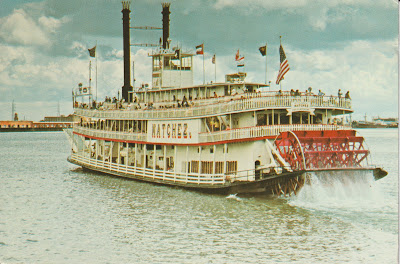The Praying Monk, Camelback Mountain, Arizona [photo by Norton Louis Avery], ca 1960s
As can be noticed at the bottom of this unused postcard featuring the rock formation called The Praying Monk, there are deckled or scalloped edges. The edging goes completely around the card, but the scan cuts off the top and sides with only the bottom showing the complete edge. Deckled or scalloped edges were first popular in the 1930s and were found on postcards until about 1950. After a brief disappearance, the edging returned and was popular during the 1950s and 1960s. This card looks like it was probably one of those published in the 1960s.
The card was published by Pettey Studios, of Phoenix, Arizona. On the reverse, the code K-376 is found to the left of the credit to the color photography by Avery. At the bottom of the center is also the numbers 64850. A blurb is found at the upper left corner of the reverse: “The Praying Monk. Near Phoenix, Arizona. On the North side of Camelback Mountain Nature created The Praying Monk, who—according to tradition, keeps constant vigil over Paradise Valley and The Valley of the Sun.” The praying monk is the smaller rock formation on the left side of the larger one identified as Camelback Mountain, due to its likeness to a kneeling camel’s hump.
Camelback Mountain is part of the Phoenix Mountain range in Maricopa County, Arizona. It is a popular recreation area for hiking and rock climbing. Efforts were made to first include Camelback Mountain as part of reservation acreage for the Pima and Maricopa American Indian tribes in 1879 but the decision was reversed six months after President Rutherford B. Hayes included it. In the 1910s efforts were made again to try and protect the area as a natural preserve. That also failed and by the 1960s nearly all the area had been sold to private interests. State authorities attempted to stop development above the 1600 ft but that also failed. It wasn’t until Senator Barry Goldwater took up the case and helped secure higher elevations against development in 1965 that some of the area was preserved. It became a Phoenix city park in 1968. “Camelback Mountain is designated a Phoenix Point of Pride.”
For additional information, see:
https://en.wikipedia.org/wiki/Camelback_Mountain
https://www.summitpost.org/the-praying-monk/763888





